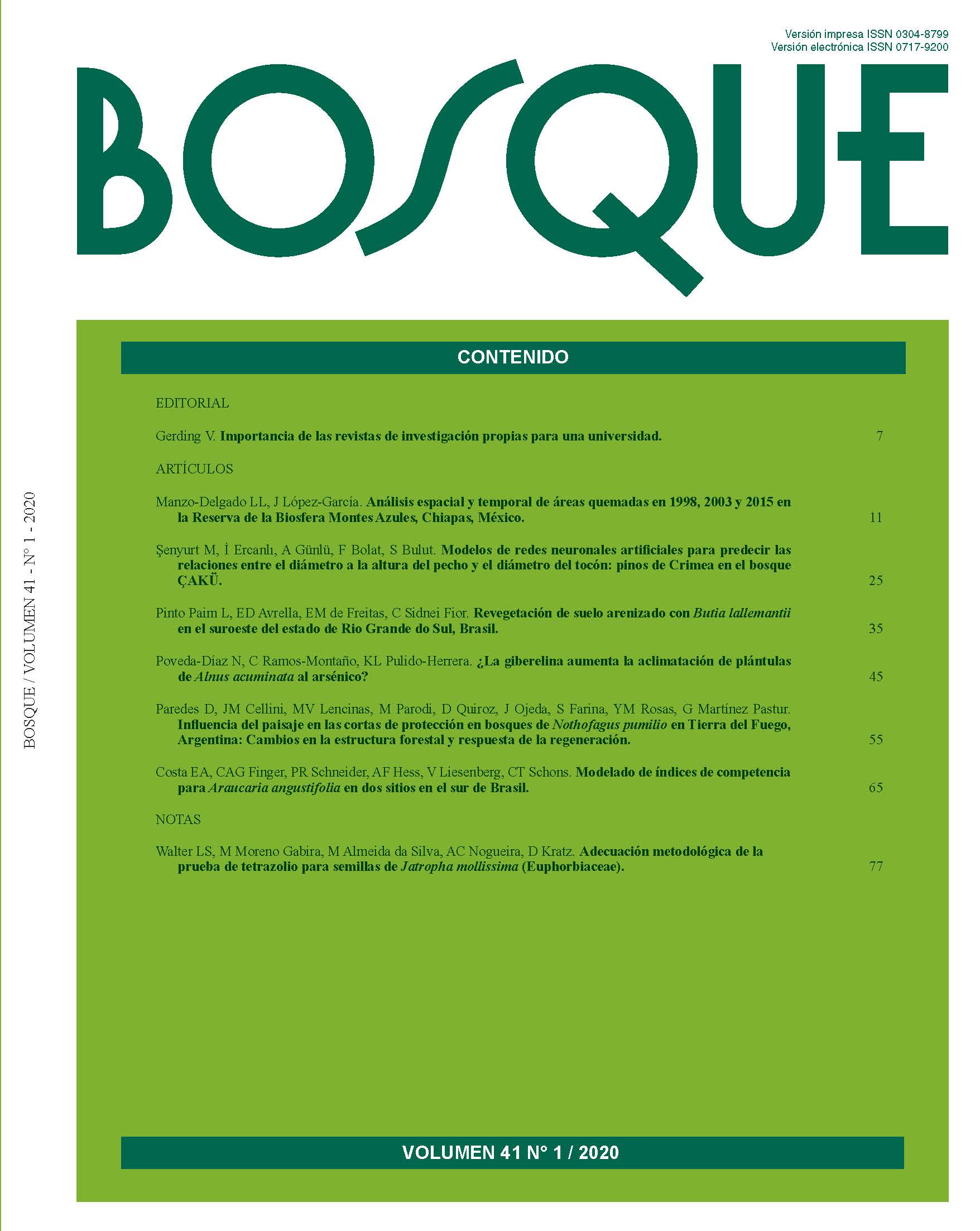Does gibberellin increase the acclimation of seedlings of Alnus acuminata to arsenic?
Main Article Content
Abstract
Arsenic is a metalloid naturally distributed in the lithosphere. However, anthropogenic factors, such as mining, increase pollution in soils. The objective of this research was to evaluate the effect of different concentrations of gibberellins (GA3) on the early development of Alnus acuminata, and determine if this treatment offers pre-acclimation under arsenic concentrations similar to those of coal mining soils of Boyacá (Colombia). Certified seeds of A. acuminata were pre-embedded in water at 4 °C for 24 hours and planted in boxes with 16 combined treatments of gibberellins (0, 80, 160 and 240 mg L-1) and arsenic (0, 3, 6 and 9 mg L-1). Germination, morphometry of germinants, early development and final seedling biomass were evaluated 30 days after sowing. The germination kinetics of A. acuminata was affected by GA3 and arsenic. GA3 increased germination by 44 %, nonetheless arsenic increased the average germination time by 10 %. Arsenic concentrations of 3 mg L-1 and 6 mg L-1 had negative effects on germination and root length; however, these effects were not observed at 9 mg L-1 of arsenic. In fact, the arsenic in this concentration combined with gibberellin increased the biomass and vigor of A. acuminata. The combined treatment of 9As + 160GA3 is recommended to produce pre-acclimatized seedlings that could be tested in planning of post-mining recovery.

